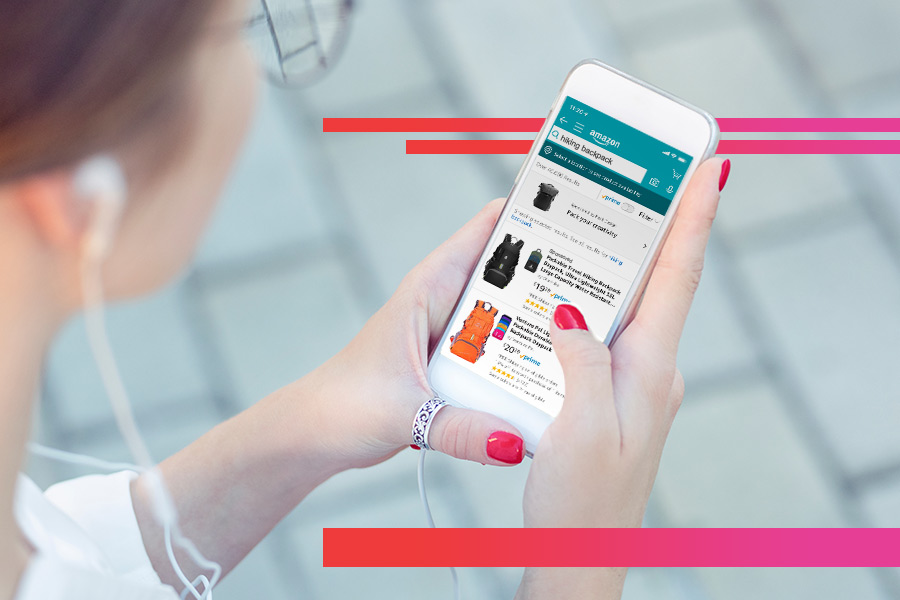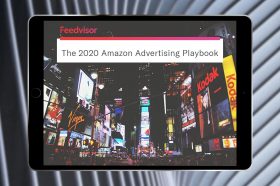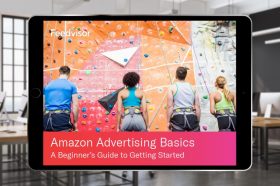Resources - Blog
How to Improve Your Click-Through Rate on Amazon

Stay on top of the latest e-commerce and marketplace trends.
The click-through rate (CTR) is the ratio of shoppers that click on your ad to the number of times it is shown. Each of your campaigns and keywords has their own CTR that you can see within Amazon campaign management and CTR optimization strategies will vary by the type of promotion.
In this post, we have rounded up five key strategies to optimize your Amazon click-through rate to help you effectively measure the quality of traffic driven to your products. Incorporating these tactics can also enable you to drive more relevant shoppers to click on your ads and view your products — the higher your CTR, the more relevant your ads are to shoppers.
1. Target the Most Relevant Keywords.
In your Sponsored Products and Sponsored Brands campaigns, make sure that you are honing in on the most relevant keywords for your items. Narrowly focused keywords can help your ads match customer searches more effectively and can improve your click-through rate. By analyzing which keywords receive high impressions and few clicks, you can deduce that these keywords may be too generic and not targeted enough to an appropriate audience. You can pause these and invest in more specific keywords that drive quality traffic to your listings.
2. Convert Automatic Sponsored Products Campaigns to Optimized Manual Ones.
Doing this will help you take advantage of the highest performing keywords identified by Amazon and weed out the ones with a low CTR. Automatic Sponsored Products campaigns target your ads to relevant customer search terms and help you find the right keywords to run successful manual campaigns. Let this automatic campaign run for two to four weeks before analyzing it, then take a look at your search terms with the highest click-through rate to use in a manual Sponsored Products campaign.
For relevant keywords with low click-through rates in Sponsored Products and Sponsored Brands campaigns, add these keywords in phrase or exact match to drive more qualified traffic to your ads. With broad match, the customer search term can contain your keyword or synonyms in any order and has the widest reach of any match type. You may consider pausing your broad match keywords with low click-through rates and applying phrase and exact matches to the keywords most relevant to your items.
3. Harvest Negative Keywords to Minimize Irrelevant Traffic.
Adding negative keywords to your automatic Sponsored Products campaigns will allow you to reduce irrelevant traffic and focus only on highly targeted traffic that can, in turn, boost your click-through rate. To identify which keywords to add as negative, look for ones with low click-through rates and a high number of impressions.
If these keywords did not generate any sales, add them as negative exact matches in your Sponsored Products campaign to ensure your ad is not triggered when a customer search uses these keywords. Reevaluate your negative match types every one to three months to stay apprised to shifts in search trends over time.
4. A/B Test Headlines and Images.
For Sponsored Brands and Product Display Ads, experiment with more compelling headlines and images to better engage shoppers. Incorporate calls to action, top performing keywords, and enticing language to encourage shoppers to click. To A/B test two headlines, for example, choose one with a descriptive headline about the product and one with a call to action.
Run both for about two weeks and see which one leads to a stronger click-through rate. With regard to images, test a variety of images to see which ones draw the most clicks. A clear product image on a white background may outperform a brand logo, for example.
5. Optimize Product Detail Pages.
Enhancing your product detail pages will help you increase the opportunity for stronger ad placements and additional clicks. Always use high-quality product images that provide a clear understanding of the item’s use. Include a tailored product title, concise bullet points, and a description that draws the shopper’s attention any exciting or compelling product benefits or features.
Final Thoughts
Click-through rates are one of the most telling metrics that you can monitor on Amazon. Proactively taking measures to increase your click-through rate on the platform can help you increase both sales and profits, as a high click-through rate can result in lower advertising spend. By optimizing your click-through rate by campaign, your advertisement will likely become more relevant to each shopper’s search query — which can in turn lead to an increase in conversion, allowing you to see the direct impact of ads on your overall business.
Learn what Feedvisor can do for your business.
When you partner with Feedvisor, you automatically receive access to our true, AI-driven technology and hands-on team of e-commerce experts. Contact one of our team members today to learn more about our end-to-end solution for brands and large sellers on Amazon, Walmart, and e-marketplaces.



